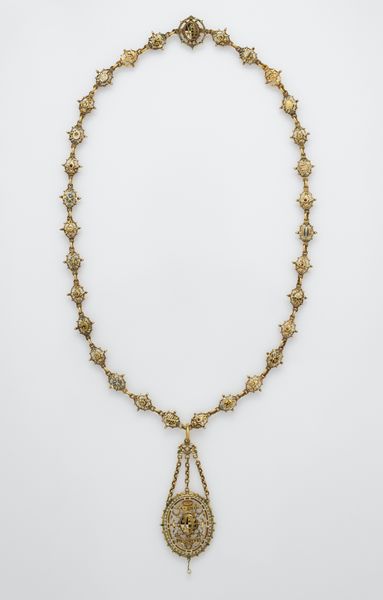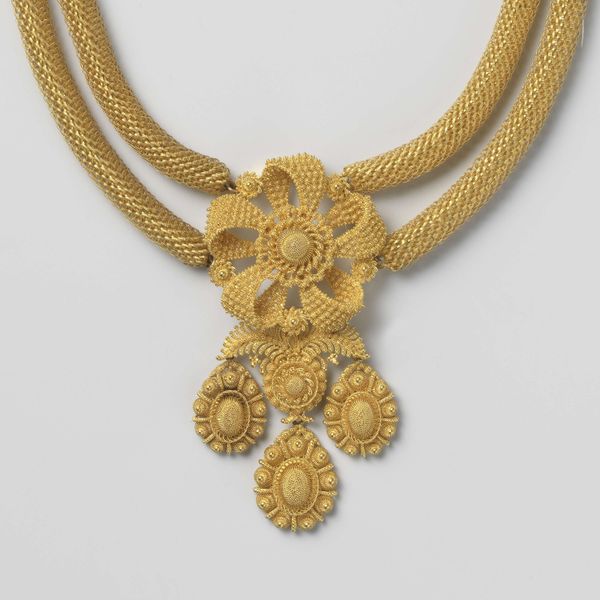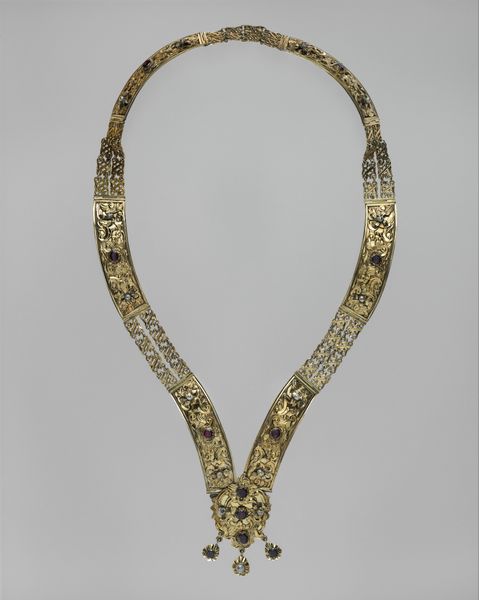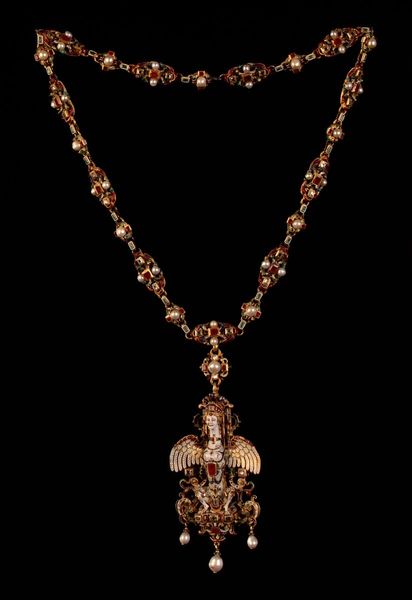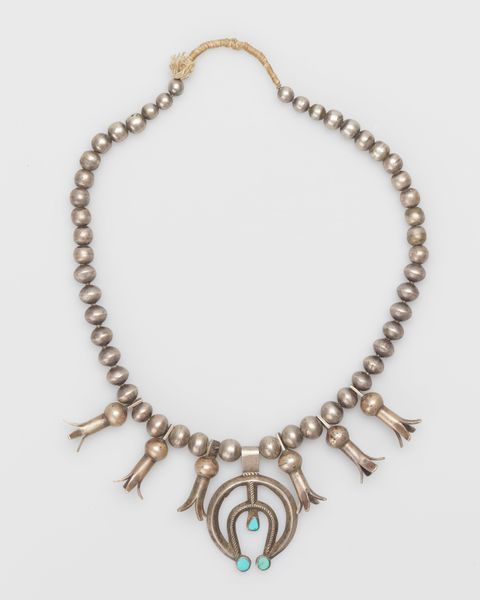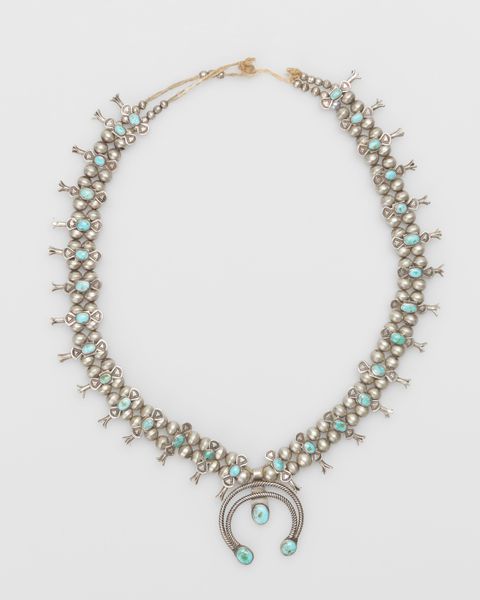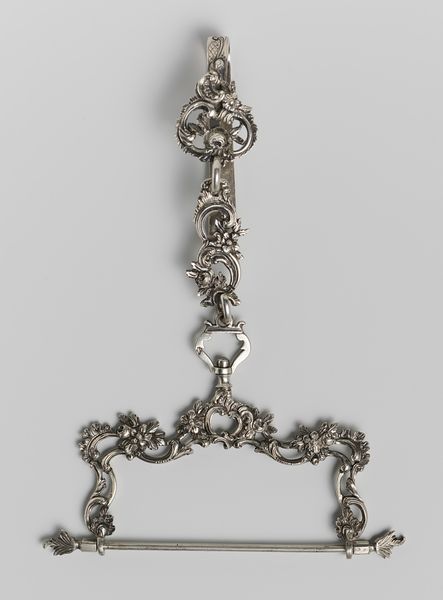
metal, relief
#
metal
#
relief
#
11_renaissance
#
historical fashion
#
decorative-art
Dimensions: height 47.5 cm, width 35.5 cm, thickness 1.2 cm, length 106.0 cm, height 3.6 cm, height 4.7 cm
Copyright: Rijks Museum: Open Domain
Curator: The piece before us is known as the Chain of the Guild of Saint Hubert, crafted around 1542 by an anonymous maker. It’s primarily fashioned from metal, employing relief techniques to create its intricate details. Editor: It’s…remarkable. There’s a real weight to it, not just visually, but I can almost feel the density of the metal. I am immediately drawn to think about who actually fashioned this. How many hours did they dedicate to this work? Curator: Precisely! Each element is charged with symbolic weight. Saint Hubert, patron saint of hunters, is central to the piece. Notice the repeating motifs; the hunting horns, crosses, and the depiction of the stag with the cross between its antlers – a legendary scene representing Hubert's conversion. It embodies the traditions, beliefs, and societal structure of its time. Editor: I wonder what the guild-system structure looked like and how specialized craft knowledge like this would have been circulated. And look at that detail! Can you imagine the tools used? The societal emphasis on religious conversion must have made working on such pieces… interesting for the craftsman. Almost like they had no escape. Curator: Perhaps so. It certainly captures a time when the spiritual and secular were profoundly intertwined. And of course, beyond spiritual power, this chain spoke to the Guild members' worldly power as well. Its materiality broadcast authority and status. Editor: Yes, it's impossible to separate this from its social function. A craftsman dedicates their skill and time to make these items—then members flaunt them for social gain. Each material involved—the sourcing, the labor—represents resources drawn from somewhere, people brought together. It serves as a visible artifact of the guild's access to land, materials, labor and consumption. Curator: I find the repetitive visual themes interesting as well. Repetition helps reinforce the ideals and narratives that defined the guild. It acts as a visual mantra. Editor: The endless circle—appropriate. You almost don’t see each little aspect that signifies Hubert, do you? One must actively see each image to read the tale. The repetitive images give the piece a life-giving function; one cannot reflect on its importance without physically, perhaps unconsciously, reading each material piece of the jewelry to then come to reflect on how it impacted social function and status. A tool! How fascinating! Curator: The chain serves as a material and spiritual link binding the guild across time. The continuous forms suggest that lineage to Hubert connects its members. Editor: Seeing this piece just reminds me to examine closely the ways materials tell unspoken yet critical narratives about power. Curator: Indeed. For me, it reinforces how visual symbols can be anchors of cultural memory and continuity.
Comments
rijksmuseum about 2 years ago
⋮
Between the links of this chain, one sees the letters S and H with an antler and a double cross. With the pendant at the bottom, these refer to Saint Hubert, patron saint of militia companies. The links with arms are those of the governors of the Guild of Saint Hubert, established in The Hague in 1542; these were added later.
Join the conversation
Join millions of artists and users on Artera today and experience the ultimate creative platform.


